Abstract
We have isolated and characterized a strain of Alcaligenes eurtrophus, designated H850, that rapidly degrades a broad and unusual spectrum of polychlorinated biphenyls (PCBs) including many tetra- and pentachlorobiphenyls and several hexachlorobiphenyls. This strain, which was isolated from PCB-containing dredge spoils by enrichment on biphenyl, grows well on biphenyl and 2-chlorobiphenyl but poorly on 3- and 4-chlorobiphenyl. Capillary gas-chromatographic analysis showed that biphenyl-grown resting cells of H850 degraded the components of 38 of the 41 largest peaks of Aroclor 1242 and 15 of the 44 largest peaks of Aroclor 1254, resulting in an overall reduction of PCBs by 81% for Aroclor 1242 (10 ppm) and 35% for Aroclor 1254 (10 ppm) in 2 days. Furthermore, H850 metabolized the predominantly ortho-substituted PCB congeners that resulted from the environmental transformation of the more highly chlorinated congeners of Aroclor 1242 by the upper Hudson River anaerobic meta-, para-dechlorination agent system C (J. F. Brown, R. E. Wagner, Jr., D. L. Bedard, M. J. Brennan, J. C. Carnahan, R. J. May, and J. J. Tofflemire, Northeast Environ. Sci. 3:167-179, 1984). The congener selectivity patterns indicate that a two-step process consisting of anaerobic dechlorination followed by oxidation by H850 can effectively degrade all of the congeners in Aroclor 1242 and possibly all those in Aroclor 1254.
Full text
PDF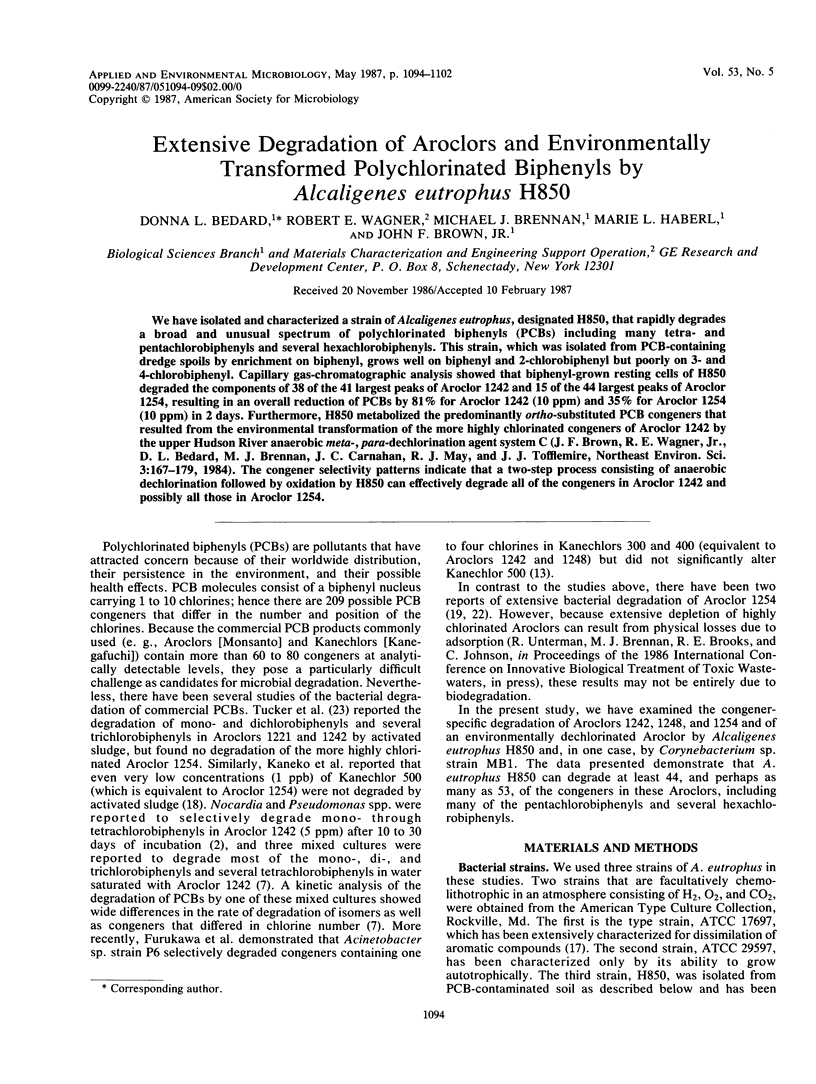
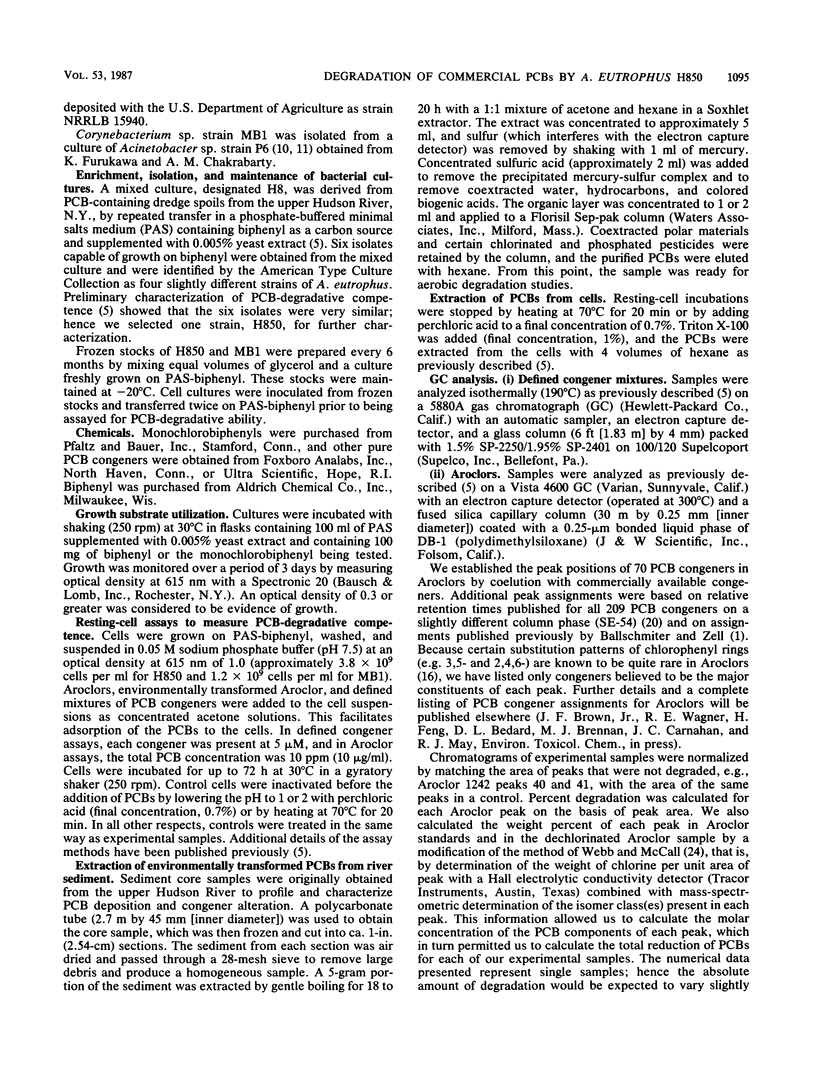
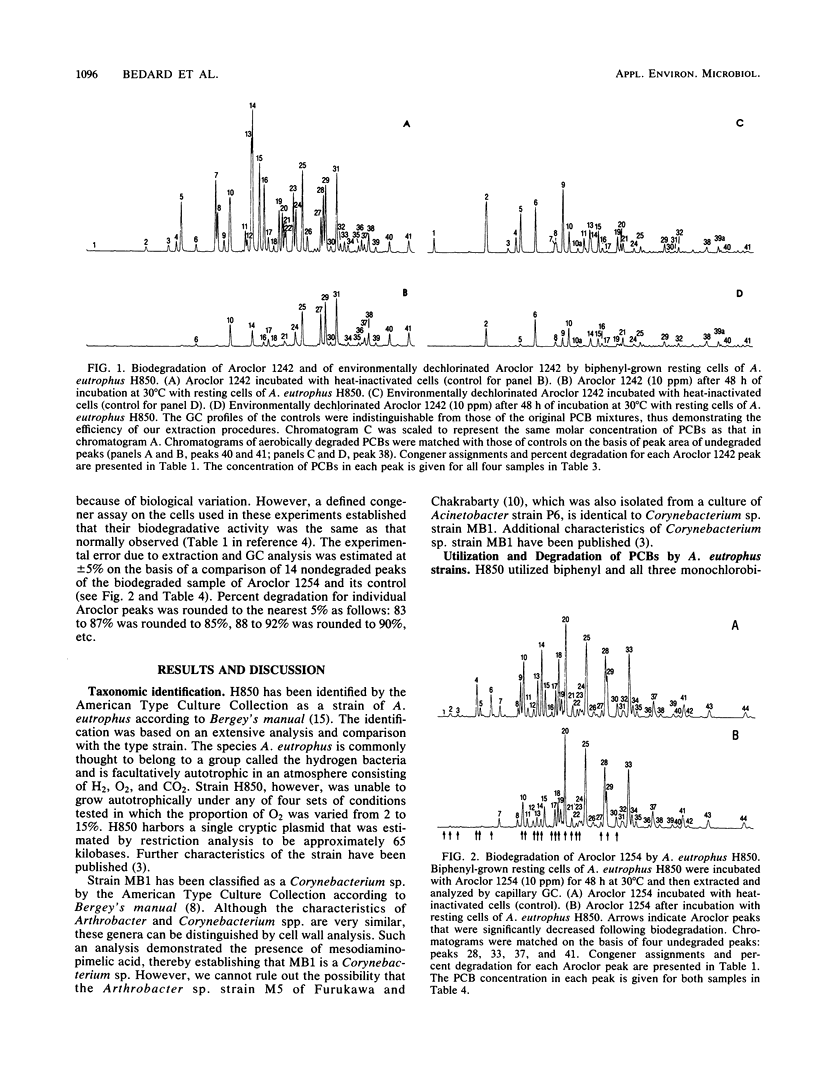
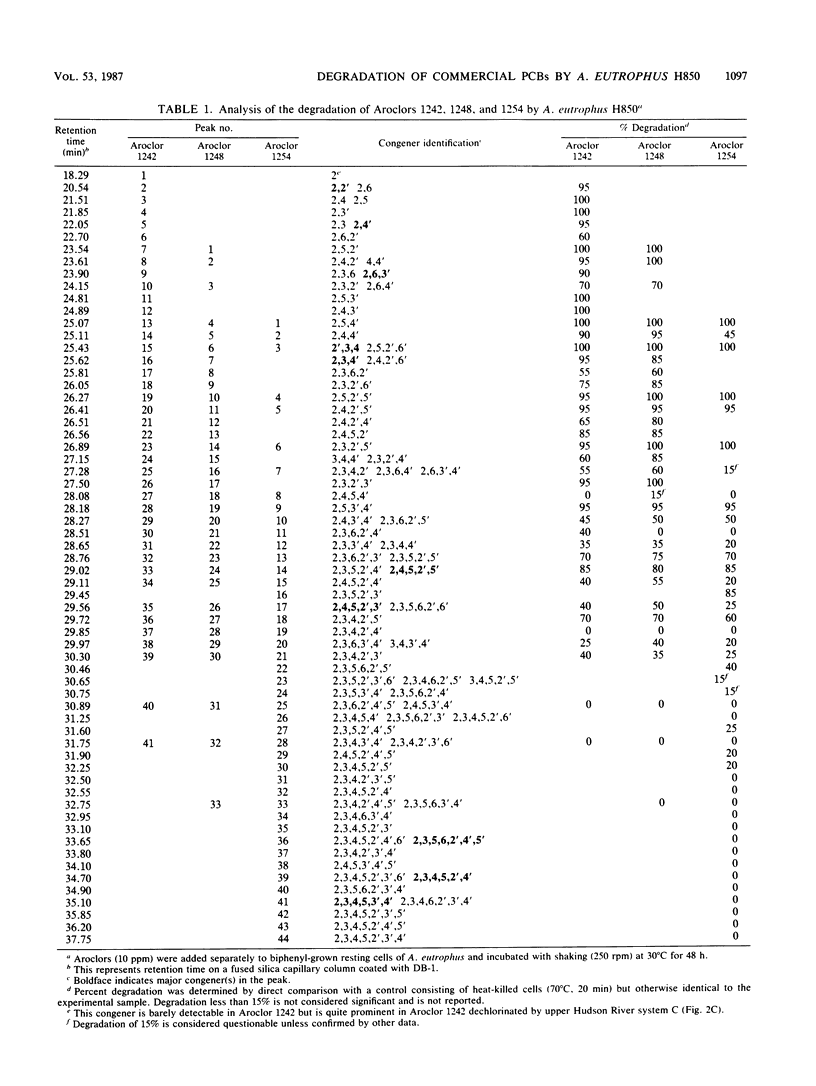
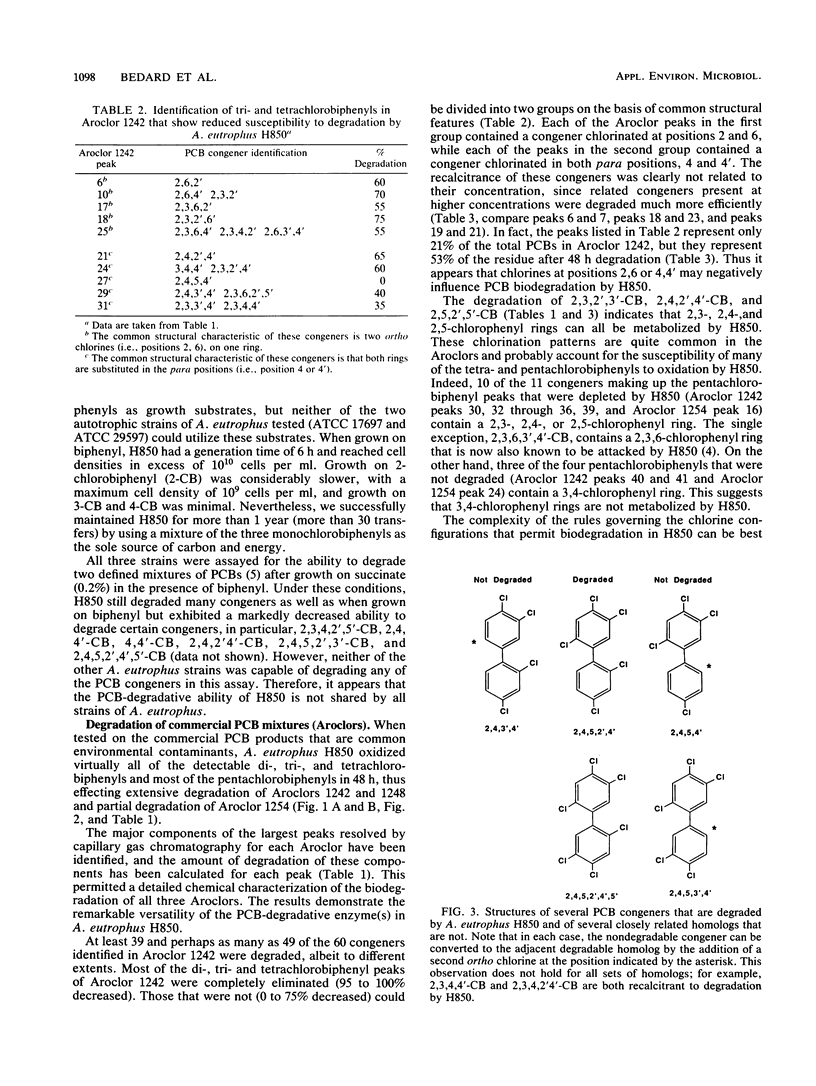
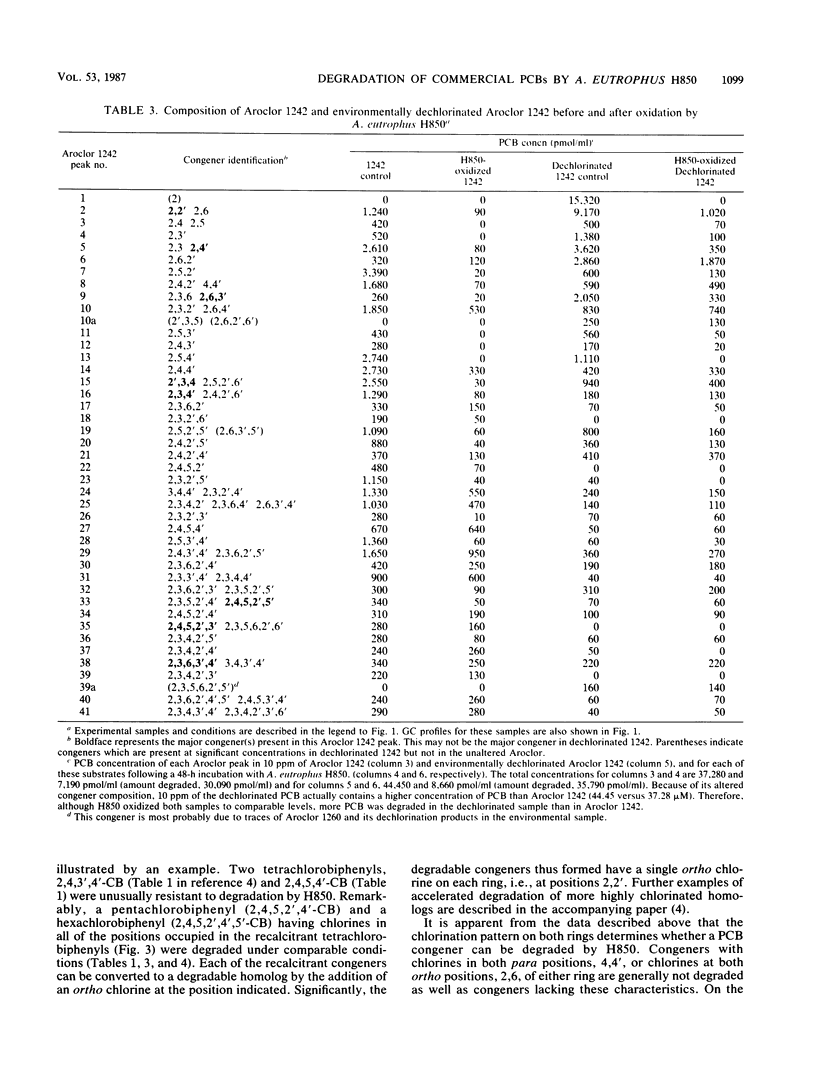
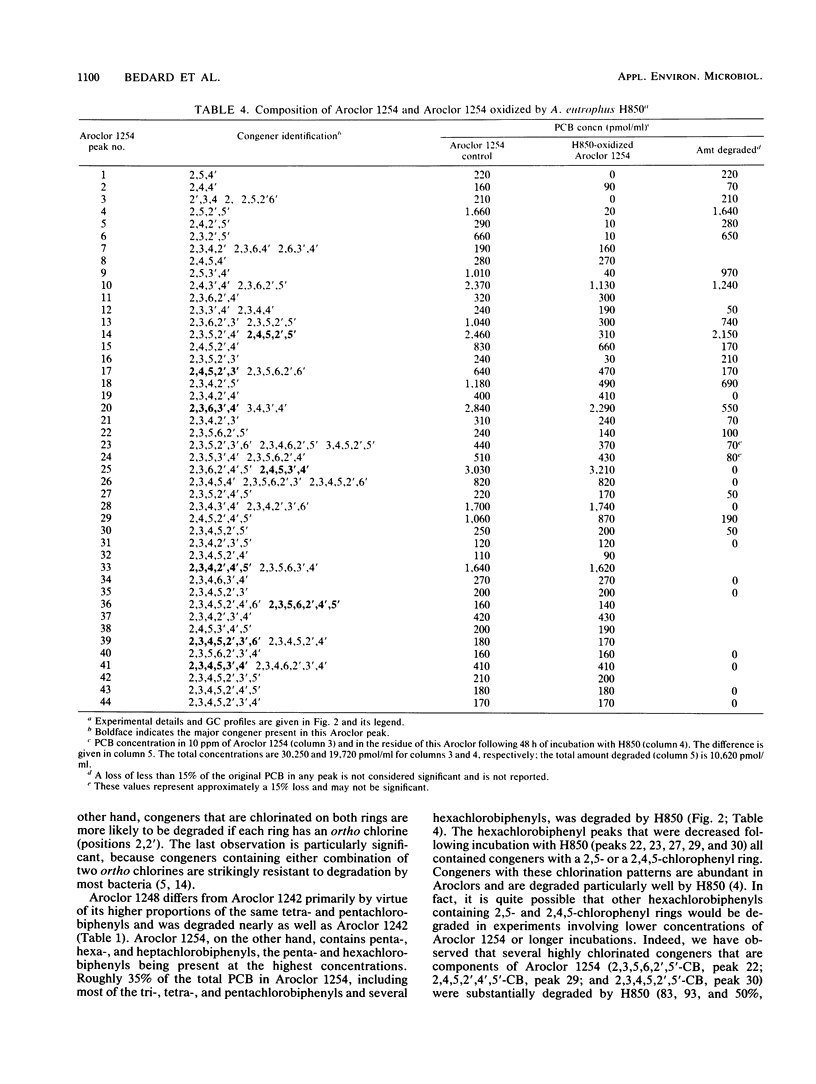
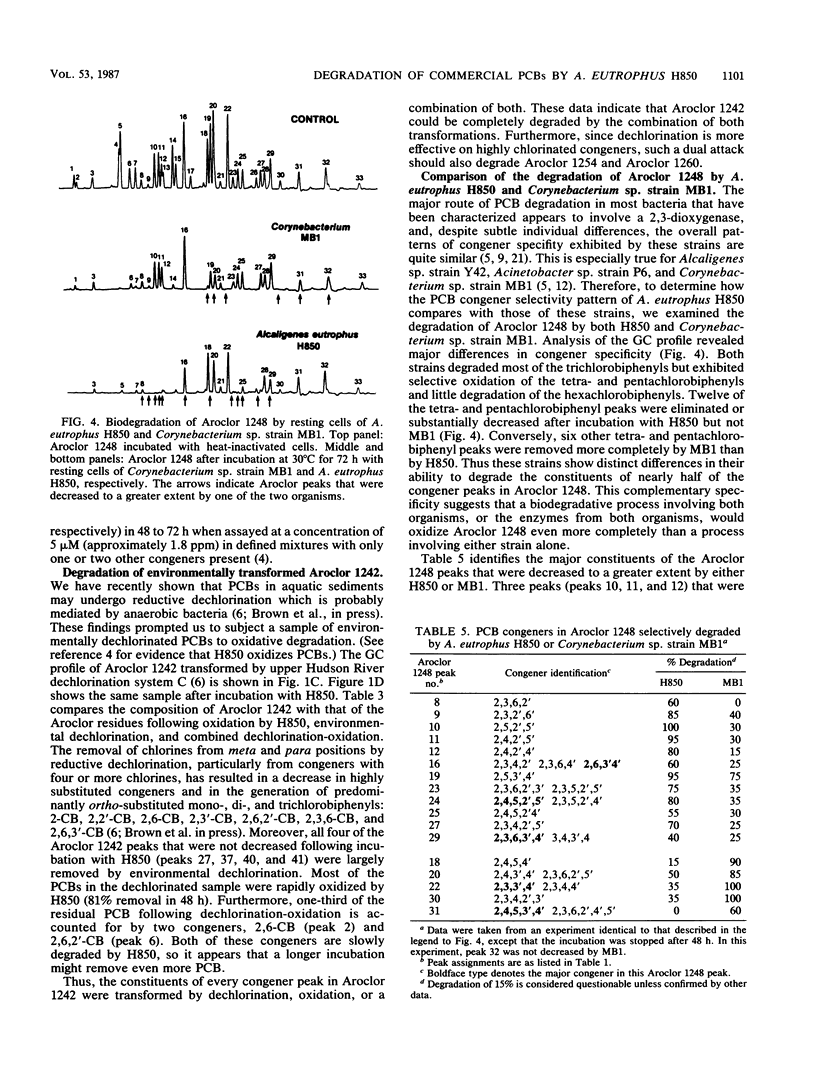
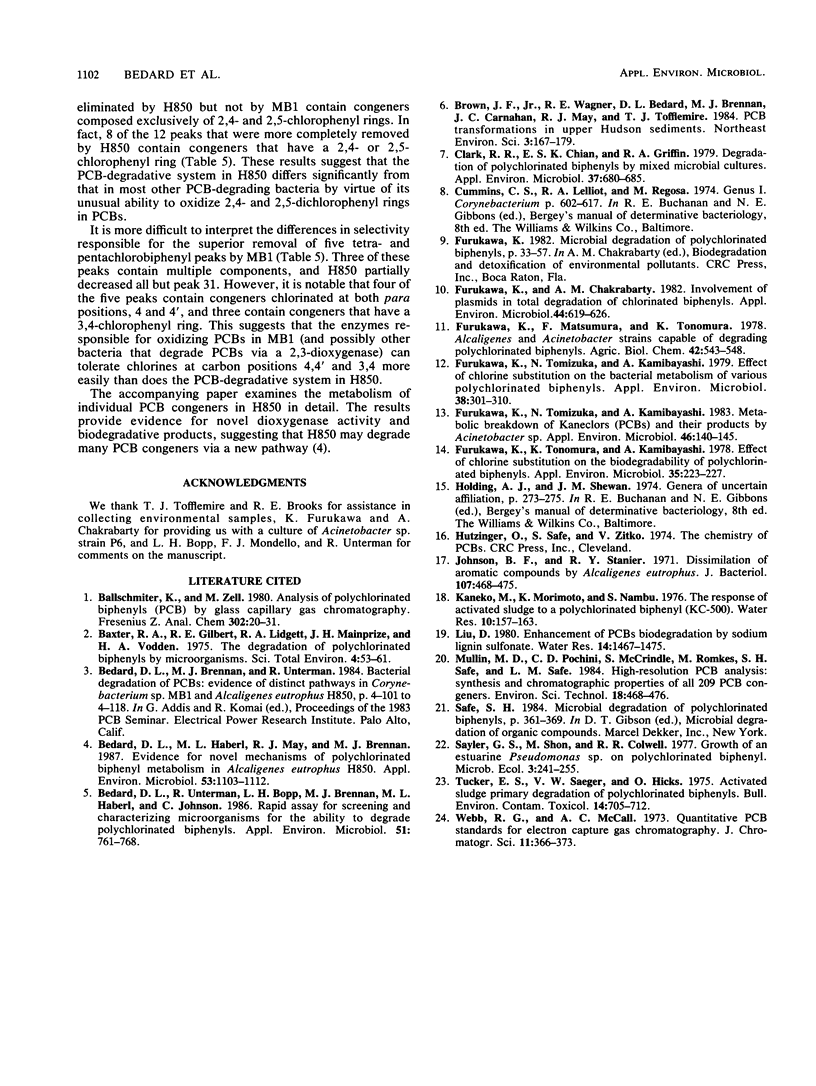
Selected References
These references are in PubMed. This may not be the complete list of references from this article.
- Baxter R. A., Gilbert P. E., Lidgett R. A., Mainprize J. H., Vodden H. A. The degradation of polychlorinated biphenyls by micro-organisms. Sci Total Environ. 1975 May;4(1):53–61. doi: 10.1016/0048-9697(75)90014-5. [DOI] [PubMed] [Google Scholar]
- Bedard D. L., Haberl M. L., May R. J., Brennan M. J. Evidence for novel mechanisms of polychlorinated biphenyl metabolism in Alcaligenes eutrophus H850. Appl Environ Microbiol. 1987 May;53(5):1103–1112. doi: 10.1128/aem.53.5.1103-1112.1987. [DOI] [PMC free article] [PubMed] [Google Scholar]
- Bedard D. L., Unterman R., Bopp L. H., Brennan M. J., Haberl M. L., Johnson C. Rapid assay for screening and characterizing microorganisms for the ability to degrade polychlorinated biphenyls. Appl Environ Microbiol. 1986 Apr;51(4):761–768. doi: 10.1128/aem.51.4.761-768.1986. [DOI] [PMC free article] [PubMed] [Google Scholar]
- Clark R. R., Chian E. S., Griffin R. A. Degradation of polychlorinated biphenyls by mixed microbial cultures. Appl Environ Microbiol. 1979 Apr;37(4):680–685. doi: 10.1128/aem.37.4.680-685.1979. [DOI] [PMC free article] [PubMed] [Google Scholar]
- Furukawa K., Chakrabarty A. M. Involvement of plasmids in total degradation of chlorinated biphenyls. Appl Environ Microbiol. 1982 Sep;44(3):619–626. doi: 10.1128/aem.44.3.619-626.1982. [DOI] [PMC free article] [PubMed] [Google Scholar]
- Furukawa K., Tomizuka N., Kamibayashi A. Effect of chlorine substitution on the bacterial metabolism of various polychlorinated biphenyls. Appl Environ Microbiol. 1979 Aug;38(2):301–310. doi: 10.1128/aem.38.2.301-310.1979. [DOI] [PMC free article] [PubMed] [Google Scholar]
- Furukawa K., Tomizuka N., Kamibayashi A. Metabolic breakdown of Kaneclors (polychlorobiphenyls) and their products by Acinetobacter sp. Appl Environ Microbiol. 1983 Jul;46(1):140–145. doi: 10.1128/aem.46.1.140-145.1983. [DOI] [PMC free article] [PubMed] [Google Scholar]
- Furukawa K., Tonomura K., Kamibayashi A. Effect of chlorine substitution on the biodegradability of polychlorinated biphenyls. Appl Environ Microbiol. 1978 Feb;35(2):223–227. doi: 10.1128/aem.35.2.223-227.1978. [DOI] [PMC free article] [PubMed] [Google Scholar]
- Johnson B. F., Stanier R. Y. Dissimilation of aromatic compounds by Alcaligenes eutrophus. J Bacteriol. 1971 Aug;107(2):468–475. doi: 10.1128/jb.107.2.468-475.1971. [DOI] [PMC free article] [PubMed] [Google Scholar]
- Kutsuna M., Someda K., Morita K., Yamanouchi Y., Kurimoto T., Kawamura Y., Matsumura H. [Ischemic cerebral symptoms after subarachnoid hemorrhage due to aneurysmal rupture (author's transl)]. No Shinkei Geka. 1978 Jun;6(6):543–548. [PubMed] [Google Scholar]
- Péter G., Károly V., Imre B., János F., Kaneko Y. Effects of lentinan on cytotoxic functions of human lymphocytes. Immunopharmacol Immunotoxicol. 1988;10(2):157–163. doi: 10.3109/08923978809014330. [DOI] [PubMed] [Google Scholar]
- Tucker E. S., Saeger V. W., Hicks O. Activated sludge primary biodegradation of polychlorinated biphenyls. Bull Environ Contam Toxicol. 1975 Dec;14(6):705–713. doi: 10.1007/BF01685246. [DOI] [PubMed] [Google Scholar]
- Webb R. G., McCall A. C. Quantitative PCB standards for electron capture gas chromatography. J Chromatogr Sci. 1973 Jul;11(7):366–373. doi: 10.1093/chromsci/11.7.366. [DOI] [PubMed] [Google Scholar]


